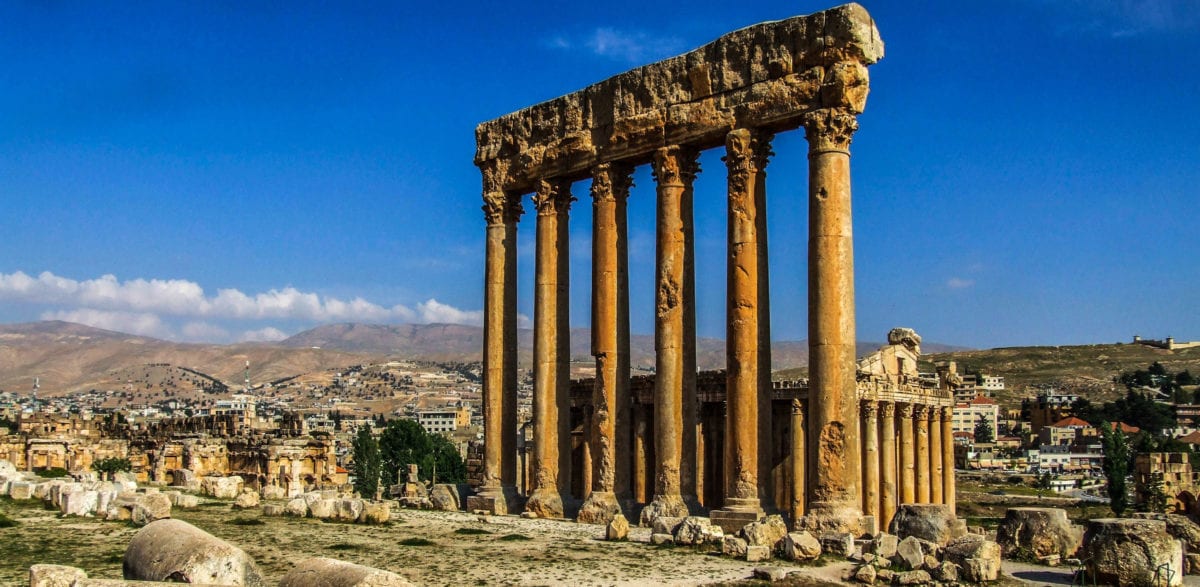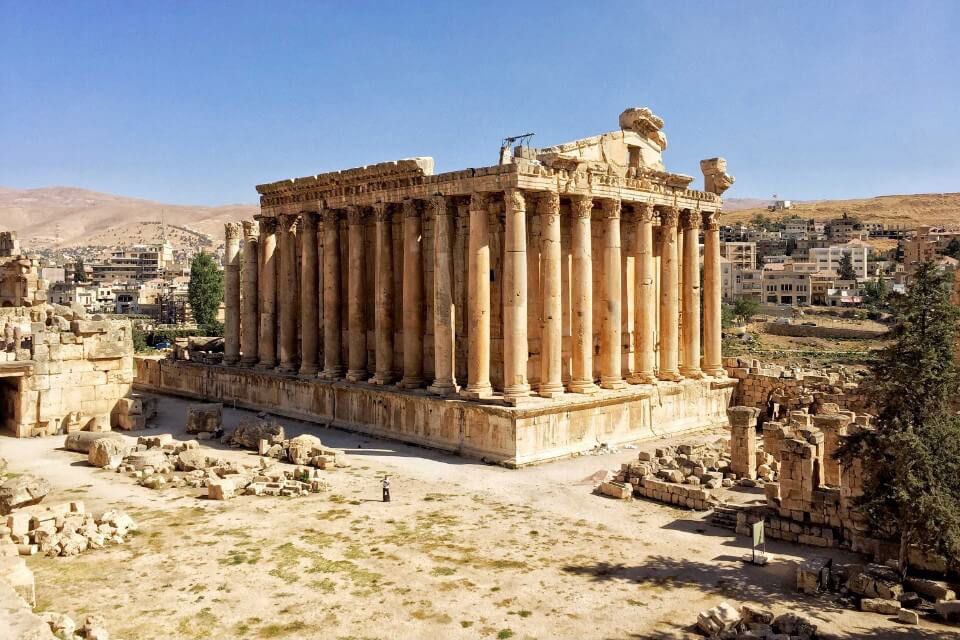Baalbeck
Baalbeck is a city in Lebanon that needs no introduction. One of Lebanon’s most popular tourist destinations, its astounding Temple of Bacchus is a UNESCO World Heritage Site and attracts thousands of tourists every year.

The city’s history spans back to the early Phoenician times and crosses into the reign of Alexander the Great. Like much of Lebanon, the resilience of the ruins in the face of destruction is part of what gives them their beauty. Through multiple empires, rulers, and wars, the temples have managed to not only survive but to keep their magnificence and grandeur intact.
Getting there
Take the Beirut-Damascus Highway out of Beirut towards Zahle, and follow the signs to Baalbeck.
What to Do
Baalbeck Archaeological Site
Though the Temple of Bacchus is the site’s largest ruin, there are actually three ancient temples at the Baalbeck Archaeological Site—the Temple of Venus, Jupiter, and Bacchus. The Temple of Jupiter originally featured 54 of the largest columns in the world, some of which can still be seen today. The Temple of Bacchus is easily one of the best-preserved remains of a Roman temple in the world. It is rumored that its halls were once used for human sacrifice. The mammoth structure took 120 years and 100,000 slaves to construct, and today, its glory is a reminder of the history buried deep within Lebanon’s past.

The sheer size of the Baalbeck Temple is enough to astound visitors. Its ancient columns loom high overhead and support an intricately decorated roof. The carving throughout the temple depicts Roman scenes and history-buffs will enjoy recognizing famous gods and goddesses in the artwork. Take your time meandering these ancient grounds, they are some of the best in the world.


